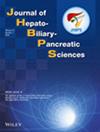Postoperative complications following liver resection remain high, ranging from 20% to 50%. Patients are hospitalized for a certain period of time following liver resection because of the risk of postoperative complications. We hypothesized that the risk of complications decreases with each complication-free postoperative day after open and minimally invasive liver resections and can be stratified using a recently reported three-level complexity classification.
Patients undergoing first liver resection without concomitant other organ resections between 2006 and 2019 were included. The three-level complexity classification was used to categorize liver resection procedures into grades I–III. We assessed the rate of cumulative postoperative complications from the time of liver resection to the time of post-hepatectomy complications (≥ Clavien–Dindo grade II).
Of the 911 patients included, 200 underwent resection of grade I procedures, 185 underwent resection of grade II procedures, and 526 underwent resection of grade III procedures. The risks of post-hepatectomy complications changed over time and were stratified by surgical complexity. For patients at the time of liver resection, the estimated 30-day complication rate was 21.8% for open grade I resection, 26.7% for open grade II resection, 38.4% for open grade III resection, 8.6% for laparoscopic grade I resection, and 12.5% for laparoscopic grade II resection. For patients without complications at 7 days, the estimated 30-day complication rate decreased to 2.1% for open grade I, 9.2% for open grade II, 17.6% for open grade III, 1.3% for laparoscopic grade I, and 4.5% for laparascopic grade II.
The post-hepatectomy complication risks were stratified by surgical complexity, liver resection approach, and the period without complication after liver resection.



